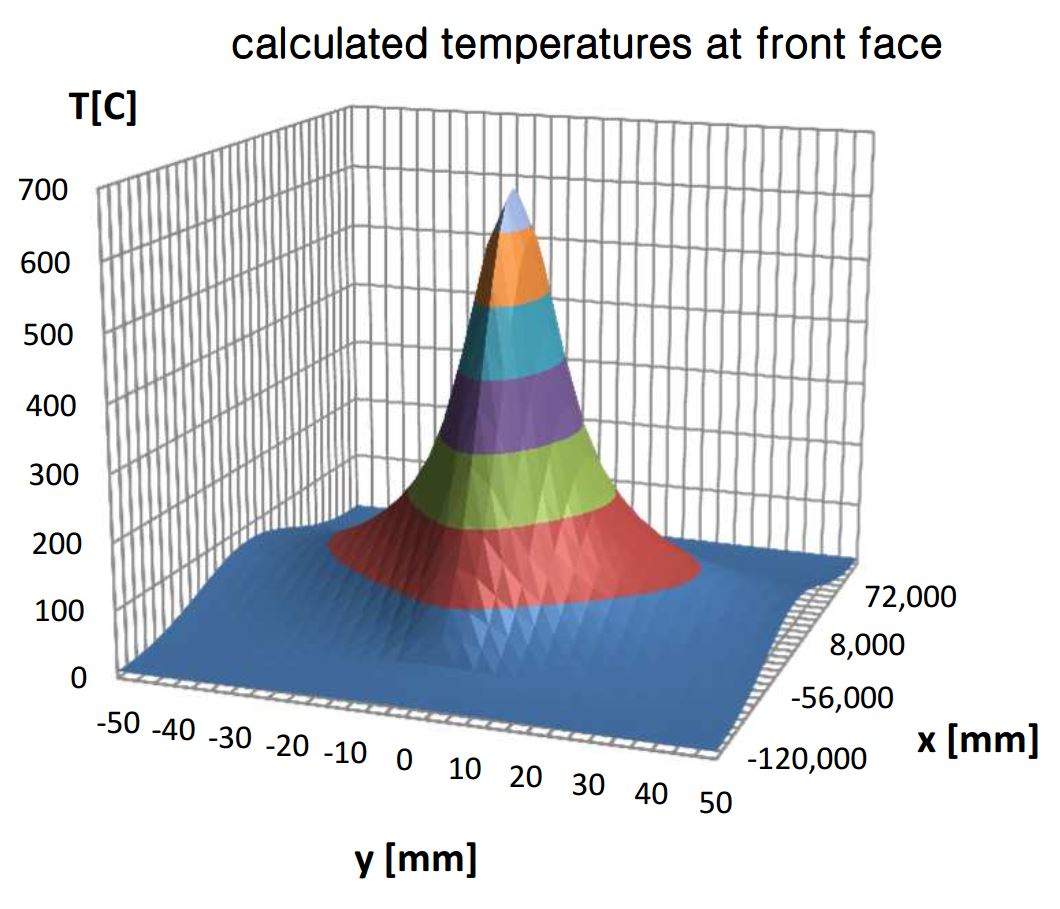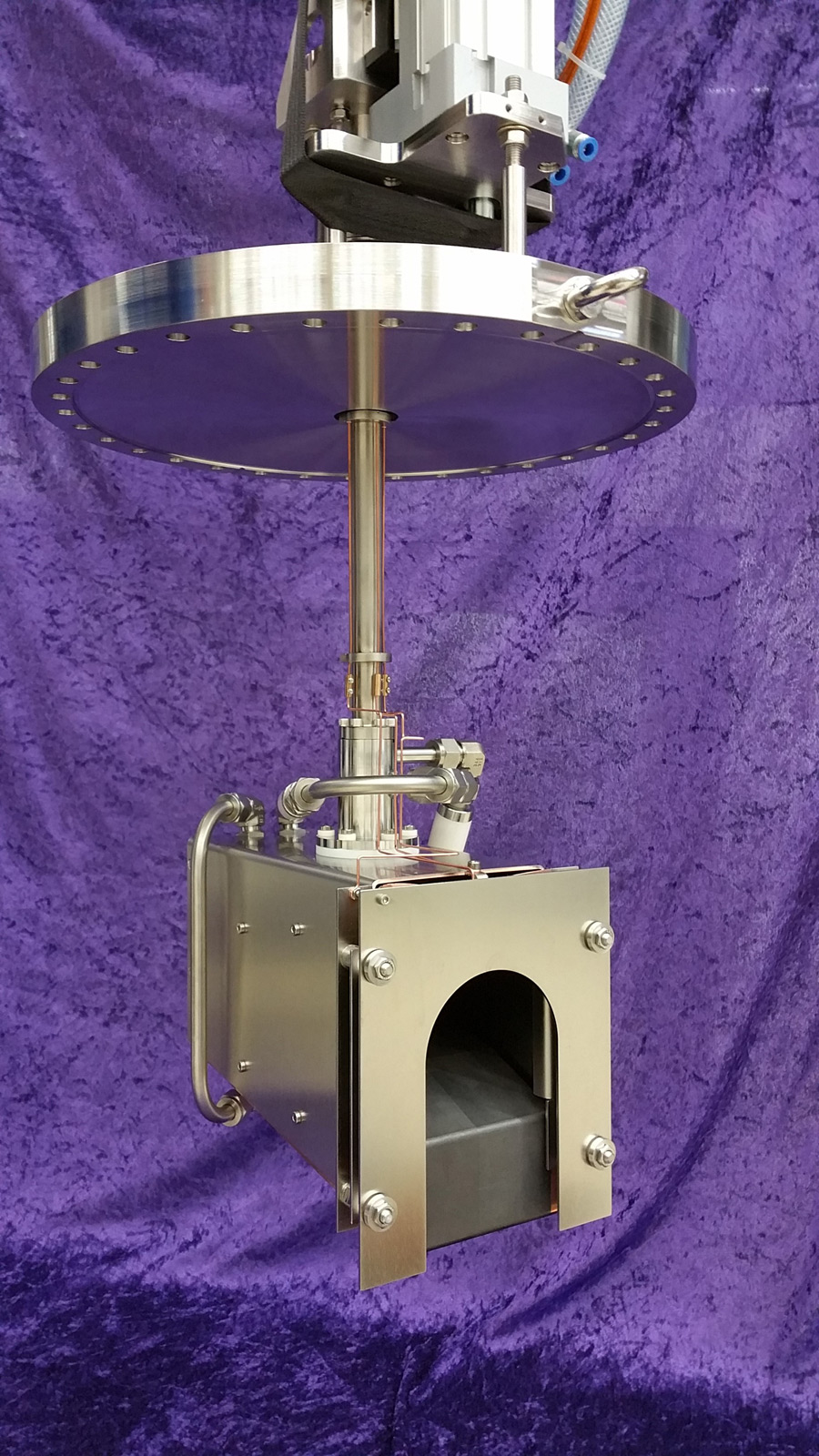
Faraday Cups
The principle of operation is rather simple: the ion beam is hitting a piece of metal, the current flow to earth is measured with an ammeter and corresponds to the beam current.
For practical implementation, however, there are a number of edge effects to consider:
1. Secondary electron suppression. Secondary electrons are leaving the surface when the beam comes in. They make a positive contribution to the measured total current and thus distort the result. A aperture at negative potential pushes the electrons back again and thus suppresses this effect.
2. The beam power must be dissipated thermally. With intense ion beams,critical values of a few kW per square centimeter are easily reached. Cooling with water is required.
3. In the time-resolved high-resolution measurement from about 1MHz a so-called fast Faraday cup is needed. This corresponds to a 50 ohm geometry. The termination (internal resistance of the ammeter) must be correspondingly low-ohmic to keep the time constant low.
4. If there is a risk of activation, materials with a low atomic number can become interesting. As an example, we also offer cups in graphite finish, also prepared with a water cooling system for high power applications.
The applications are very different, like our solutions. Please confront us with your specific wishes, name us your characteristic parameters such as the expected beam current, the particle species, the beam energy, the beam spot size and the required aperture, movable to linear drive or stationary. We will certainly find an optimized solution.



